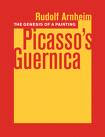.jpg)
An excellent example of how Goldsworthy incorporates this tension between geometry and nature into his work is his Three Cairns project. “The project consists of three temporary cairns, three permanent sculptures, and three museum exhibitions.” Produced on a massive scale, the space between them stretches across the North American continent. The permanent cairns remain at museums in San Diego, California (the west coast), Purchase, New York (the east coast), and Des Moines, Iowa (central). The enormity of the Three Cairns project is suggestive of this Scotsman’s attempt to grasp the vastness of the North American continent.
The construction of a cairn typically requires some mathematical precision because it must be able to support its own weight. Nevertheless, Goldsworthy rarely uses mechanical devices or engineering manuals. Reflecting on this theme in his work, Goldsworthy writes,
The cairns are made by eye. I use a tape measure, just to keep within the limitations of the width that I feel is stable in proportion to the base. I always attempt to make the perfect cone but fail. A tension between what I want and what is emerging. This tension is important to the feeling of the piece.
The tension between geometry and the natural form is further heightened in Three Cairns because mathematical precision is the only way to connect the physically distant cairns to one another. Goldsworthy writes, “It is the way I carry with me the East and West Coast cairns and can project them into the space at Des Moines.” The difference between the ‘perfect cone’ and the one that is actually constructed could be seen as a flaw in his work, but he suggests that it is a fundamental aspect of the cairns.

Goldsworthy himself speaks about the process of building a cairn in which he, as one dialogue partner, is not in complete control. He writes the following at the time of constructing the “West Coast Cain” at the San Diego Museum of Contemporary Art:
I am now locked into an intense dialogue with the stone. There is a feeling of physical engagement with the material that is consuming and at times exhausting, a struggle in which a moment’s lapse of concentration can lead to a loss of control.
What is so interesting about Three Cairns is that the value of this “loss of control” is called into question. He writes, “Normally [a loss of control] can be interesting, but the parameters I have set for myself in the Three Cairns are so tight that they do not allow for that kind of variation.” His journals at the time that he was in North America constructing Three Cairns reveal an internal debate over how much this particular project can be made in his typical dialogical manner. While working on the “East Coast Cairn” for the Neuberger Museum of Art in New York Goldsworthy speaks much more positively about a lack of control in his creative practice:
Sometimes I feel that the source of a sculpture’s energy comes from the effort of trying to regain a sense of balance lost at some point when I lacked control or concentration or perhaps made an error of judgment.

As valuable as the experience of overcoming a loss of control can be, it is nevertheless very frustrating for the artist. While working on the “Midwest Cairn” in Des Moines, Iowa, Goldsworthy writes:
I had to leave the site and find a quiet indoor space in which to work out dimensions away from the stone. This is a very different way of working for me: problems are usually best solved in the making. This sculpture however needs a different approach. I need to look at the space between the three cairns as well as the stone in front of me.
Leaving the site on which he is working may not seem that radical, but considering the importance of place and the physicality of his materials, this choice by Goldsworthy reveals that he is willing to depart from his normal mode of practice to successfully complete these sculptures. Thus, the tension introduced by greater mathematical precision in Three Cairns proved to be a struggle for Goldsworthy, and one that provoked an exploration of new ways of making.




No comments:
Post a Comment